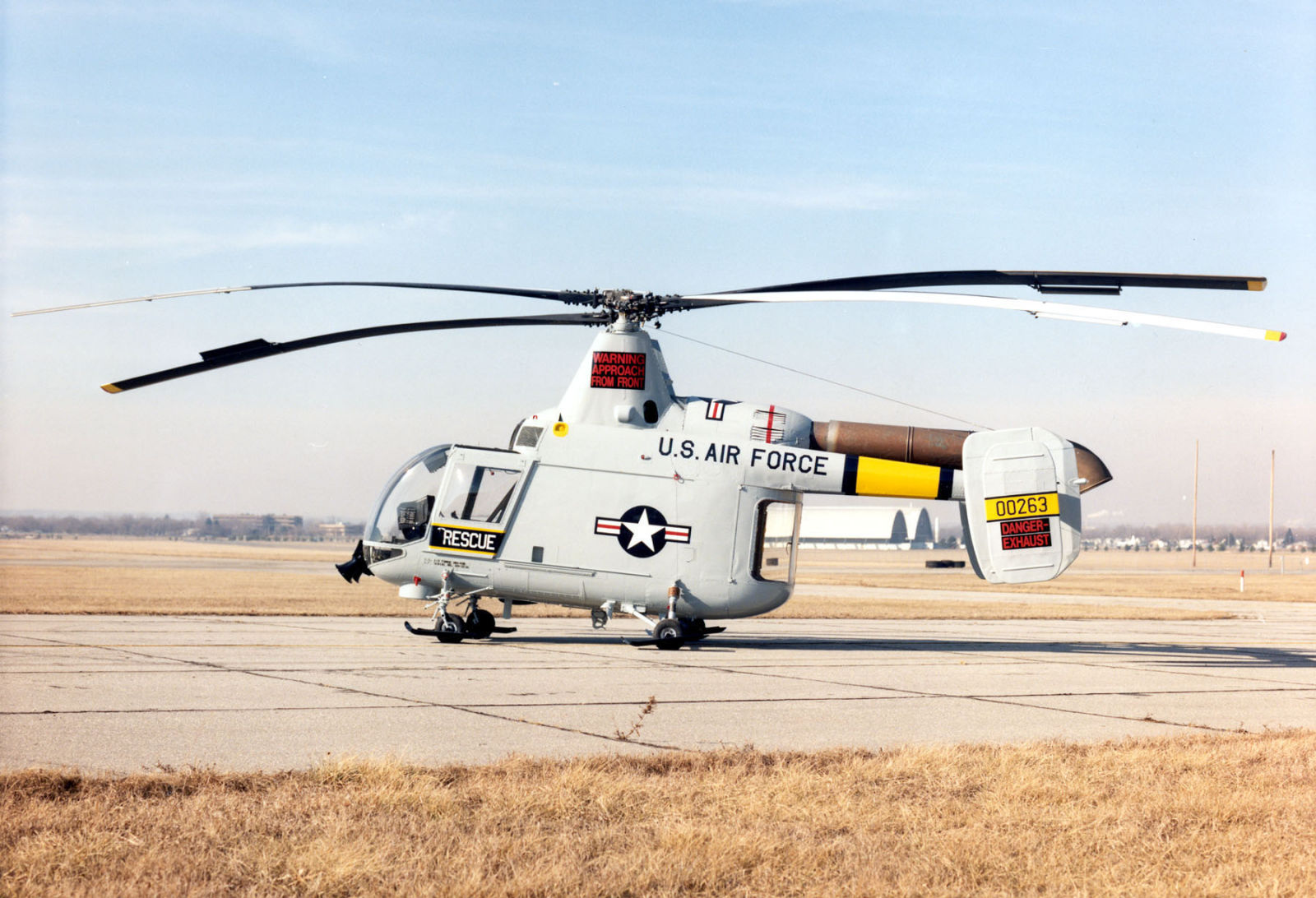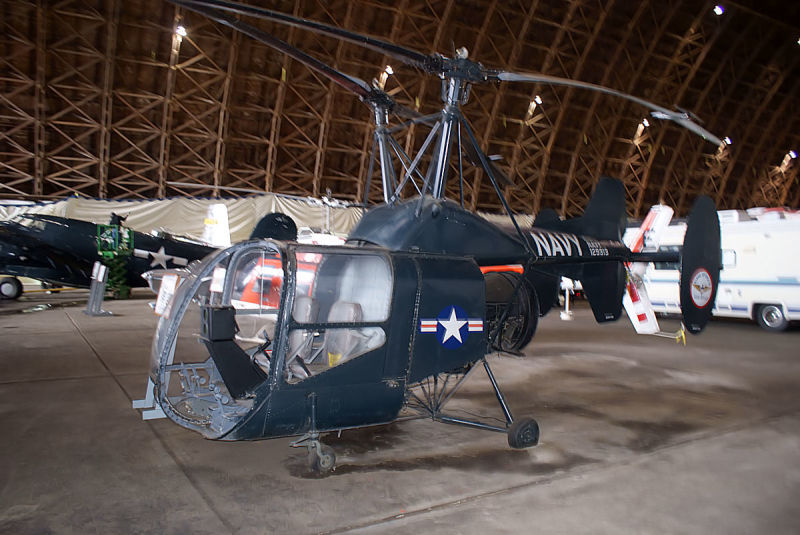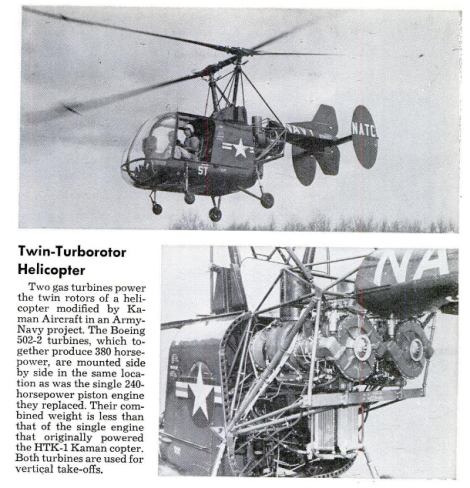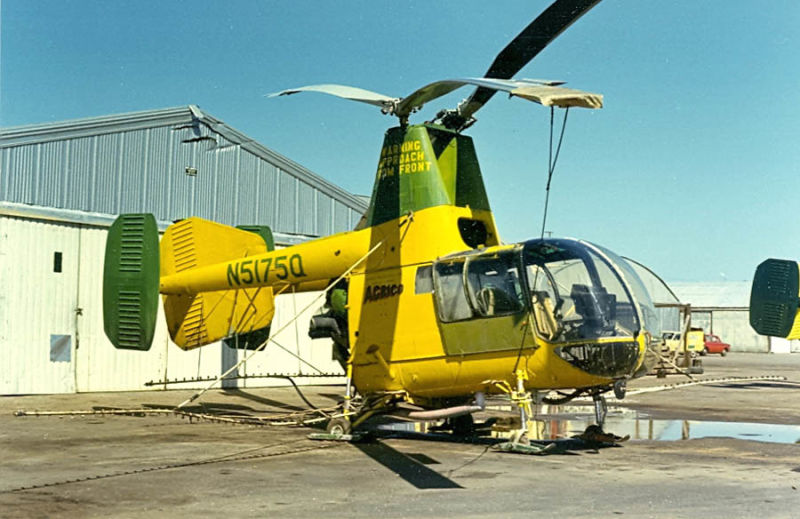Founded by Charles Kaman in 1945, the Kaman Corporation quickly established itself as a major manufacturer of helicopters in the early Cold War. After graduating with an engineering degree in 1940 and working for Igor Sikorski during WWII, Charles founded his own company, taking with him his patents for servo-flap controlled rotors:
What is the Servo Flap and How Does it Work?
The servo flap is a small airfoil located at about 75 percent span of the rotor blade, situated on the trailing edge of each rotor blade. These flaps are controlled by the pilot through push-pull control rods and their function is similar to that of an elevator on fixed wing airplanes. Moving the trailing edge of the flap upward moves the leading edge of the main rotor blade up. This increases the rotor pitch or the lift in very much the same manner as the elevator, on a fixed wing aircraft, changes the angle of attack on the wing. Thus the helicopter pilot can cause the angle of attack of the flap to increase or decrease in pitch, causing the helicopter to alternately dive or climb.
Anton Flettner, a German aviation engineer, was captured and brought to the US as part of Operation Paperclip. Flettner was developer of developer of Germany’s Flettner Fl 282 Kolibri (“Hummingbird”), one of the first helicopters to enter production. The Kolibri was a synchropter, two intermeshing rotors allowed flight without the need for a tail rotor, which, while needed for stability, robbed power from the main rotor. Kaman’s servo flaps would blend nicely with the synchropter principal, and Flettner was hired on as the Kaman Corp’s chief designer.
Kaman’s first design, the K-125, flew in 1947. The synchropter, equipped with Kaman’s flaps, flew well enough that two additional prototypes, the K-190 and K-225, were developed in 1949, and several were evaluated by the Navy, Coast Guard and USAF. In 1951, a K-225 was equipped with a Boeing T50 turboshaft engine, becoming the first helicopter to fly with a gas turbine.
Kaman continued developing the design, and in the early 1950s received contracts from the Navy and USMC to produce a light training, observation and utility helicopter under the (pre-1962) designations HTK-1, HOK-1, and HUK-1.
These early models were powered by piston engines, with the HTK-1 being fitted with a Lycoming O-435-4, the HOK-1 an R-1340-48 Wasp, and the HUK-1 an R-1340-52. Under the 1962 Tri-Service designation arrangement, the three were redesignated the TH-43E, OH-43D and UH-43C respectively.
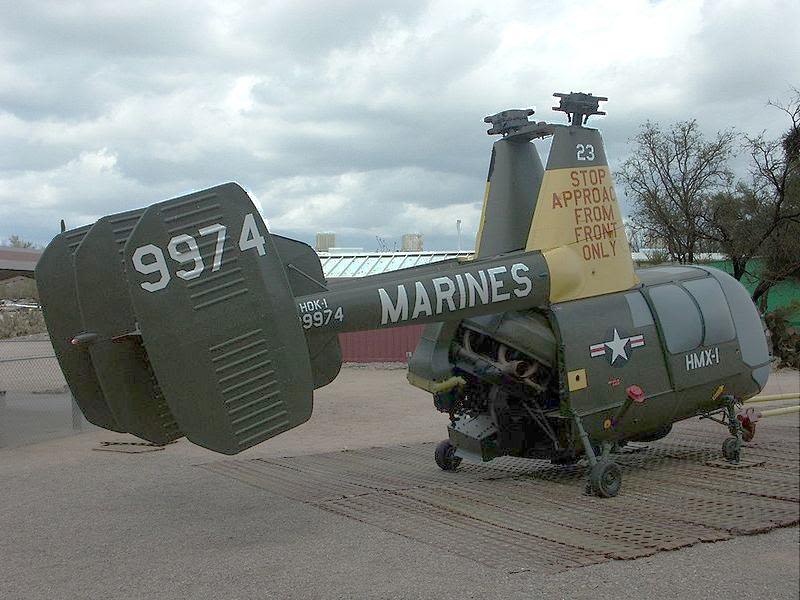
Kaman continued to work on the design, and in 1954 an HTK-1 was re-equipped with two Boeing T50, becoming the first twin-turboshaft helicopter.
The USAF, which had acquired 18 HOK-1 under the designation H-43A (HH-43A post-1962), was sufficiently interested that it ordered an enlarged version powered by a turboshaft, resulting in the H-43B (HH-43B post-1962).
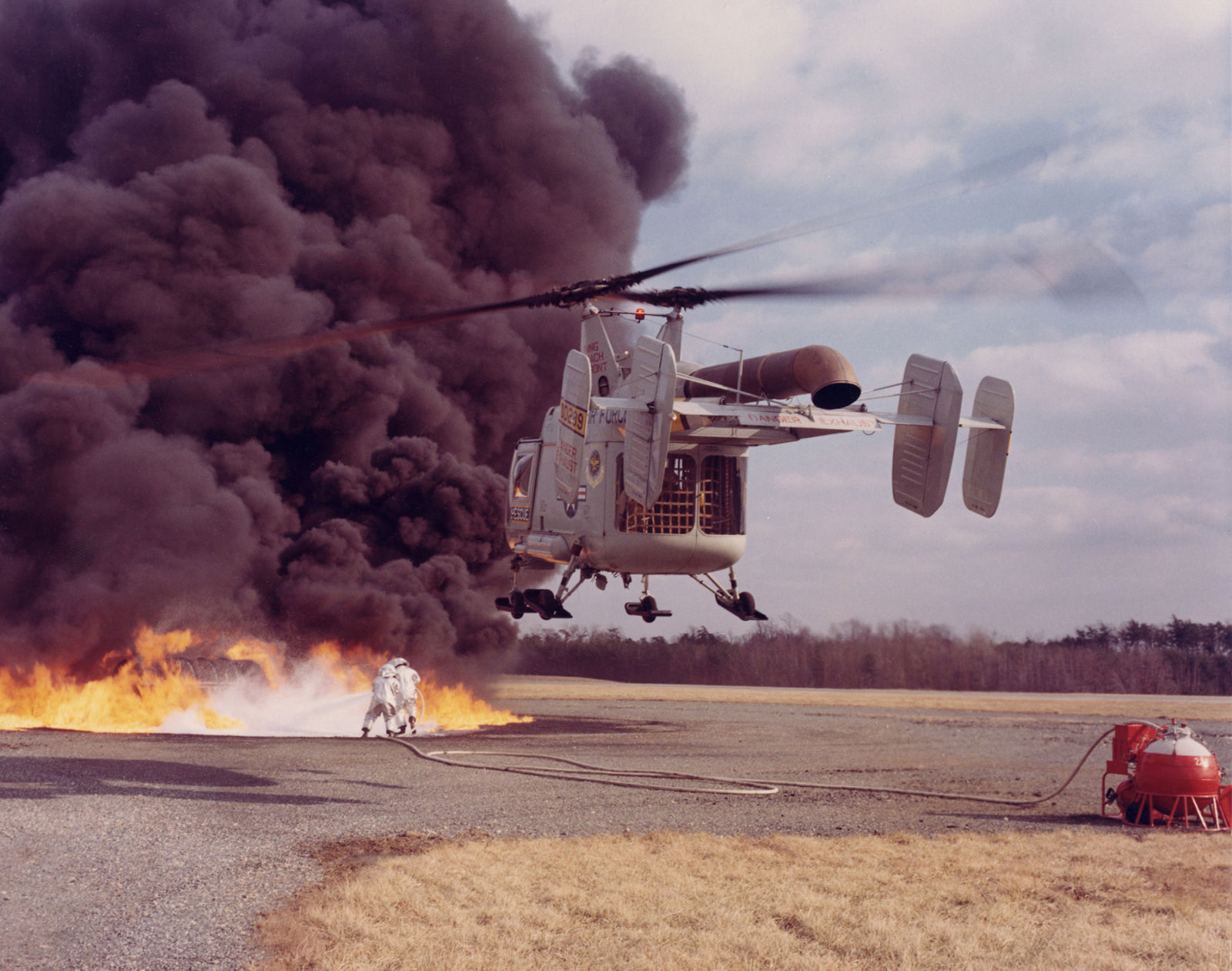
The HH-43B was powered by a Lycoming T-53 gas turbine, had three seats and carried a full set of rescue equipment. The USAF purchased 200 HH-43Bs, and used them for on-base rescue and firefighting duties. The B model had a flight ceiling of 25,000', and a maximum speed of 120mph. Developed at Wright-Patterson AFB, the firefighting kit could produce 700 gallons of fire-fighting foam.

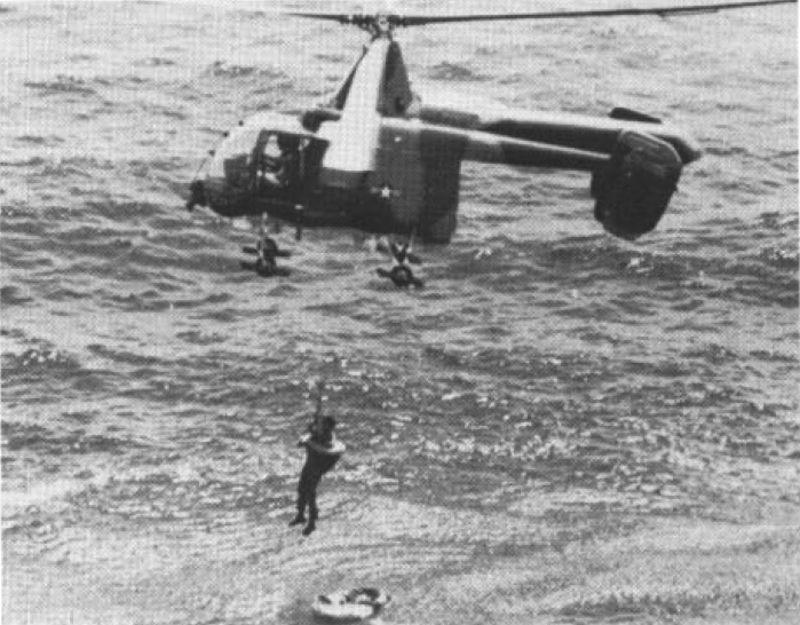
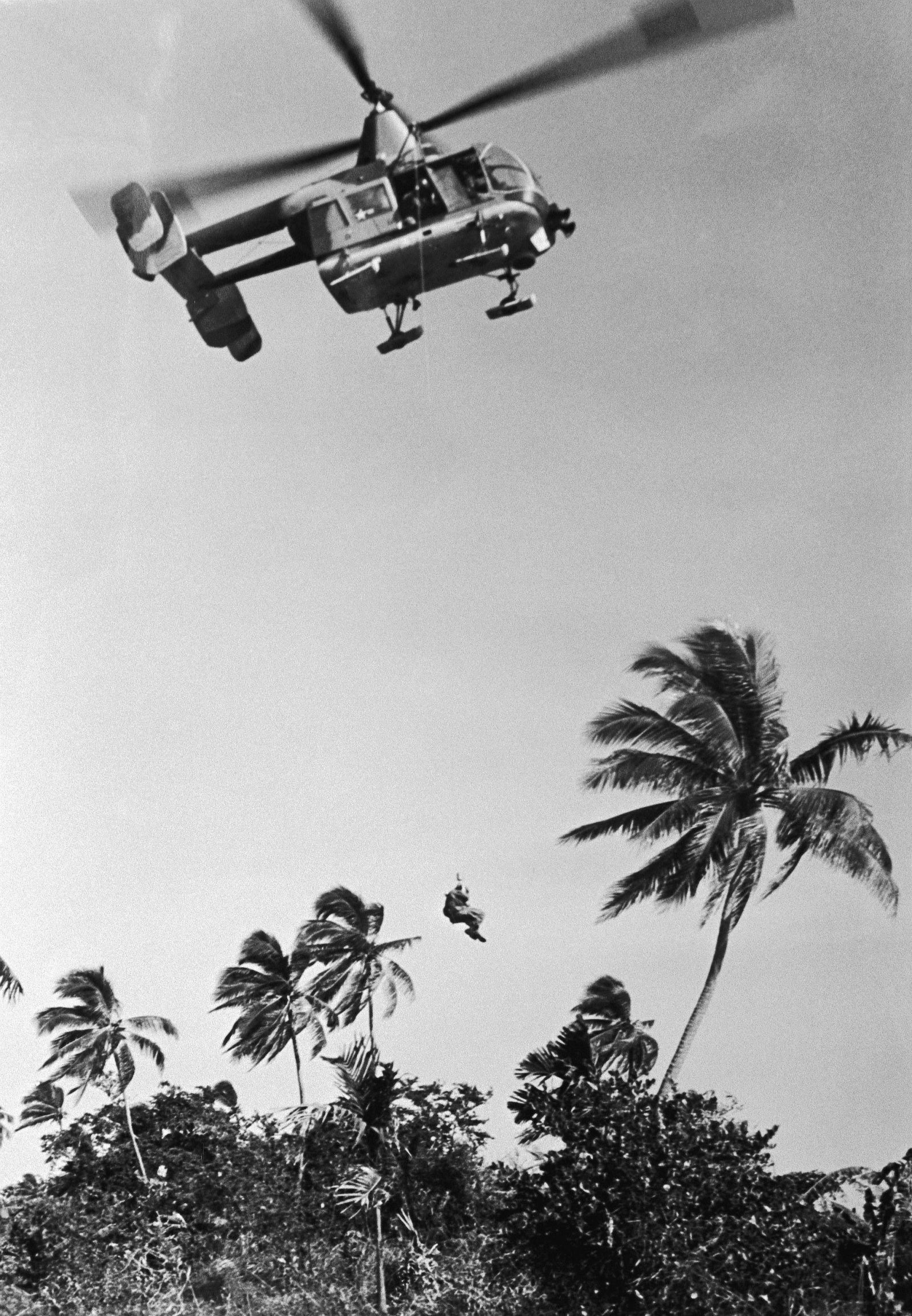
In response to the growing US presence in Vietnam, the USAF sent several detachments of HH-43s to perform combat search and rescue missions (CSAR). Officially known as “Huskies”, the HH-43 quickly became known to soldiers and airmen in Vietnam as “Pedro”, the call sign for the 40th Aerospace Rescue and Recovery Squadron. Though eventually replaced by newer helicopters in the 1970s, the Huskies flew more rescue missions than the rest of the US forces combined.
Retired from military service in the middle 1970s, Huskies found their way into civilian hands, serving as agricultural aircraft, loggers, and general utility.
A large number of Huskies survive as museum pieces and in private hands.
